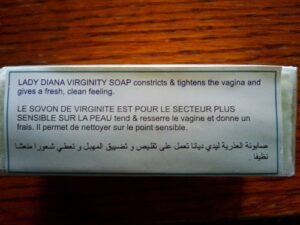Excerpt: In the case of Kate Middleton, what we see is a reinventing of her as not exactly virginal but at least as modest and easily shocked, a reinvention that allows her to take her rightful place in the hymenal economy of Brand Britain.
Shocked, We Tell You, Shocked
As I write this, the Royals are engaged in a desperate and somewhat overblown attempt to track down and punish the photographer who took and sold photos of a topless Kate Middleton. Furious at what it considers a violation of privacy, the Windsors are not keeping calm and carrying on; they’ve decided, instead, to go apeshit in a display of anger that defies reason. Their initial response was that publication of the photos was “reminiscent of the worst excesses of the press and paparazzi during the life of Diana, Princess of Wales, and all the more upsetting to the duke and duchess for being so.” Such hyperbole begs a take-down, and commentators have happily obliged. The Guardian’s Catherine Bennett, for instance, asked, “A few blurry pictures at Château Posh…are similar to Diana’s loss of consciousness in a melée of camera flashes and shoving paparazzi?”
The Royals’ declaration of a desire for privacy is laughable, given that they are given to staging their most intimate and private rituals in public. They and Kate Middleton can’t have it both ways: They can’t invite the whole world into their dining room and then complain that the guests got into their good liquor. What remains interesting, however, is the intensity of the horror expressed here and the suturing of Kate Middleton into the long and rather chaotic legacy of Diana Spencer, a woman who was a burr in the Royal saddle even as she became the most successful ambassador for Brand Britain.
This recent staging of shock and horror allows for the re-virginification of Kate Middleton so that she might become a more suitable Duchess of Cambridge. Hers may have been a modern Royal wedding— she and William lived together prior to marriage—but Middleton is now well and truly ensconced in a modern-day tradition which is all about keeping a largely symbolic monarchy alive and continuing the very profitable brand that the Royals have carved out for themselves. Her projected sense of dismay is part of a conscious and unconscious cultural desire as well as a scripted effort on the part of the Royals to project her as a proper Queen-in-waiting. Having gone through the “millionaire-girl-next-door-who-got-her-prince” phase, Middleton’s image now requires a tweaking and her propriety hinges upon a tangible if archaic perception of her virtue.
It is inevitable, when one writes about the Windsors, that the line between petty gossip and analysis begins to blur somewhat. But that blurring is precisely the point: To locate the nascent drama of Kate Middleton metamorphosing into the Duchess of Cambridge and, perhaps one day, the Queen, it’s necessary to poke around in the muddy waters of speculation and public spectacle that constitute the endless myth-making of the Royals.
Watching all this unfold, it’s hard to believe that Kate Middleton was actually surprised by the photographs. This is not the first time that members of the Royal household have been caught topless or bottomless in public, as Sarah Ferguson and Harry Windsor can testify. I have to imagine that Royal trainers, who teach possible future queens how to descend stairs in long gowns without looking down, have also offered this bit of advice to Middleton: Do not ever take your clothes off in front of your window. Or on open balconies. In fact, it might be best if you stay clothed all the time except, perhaps, in the bathroom. Perhaps. 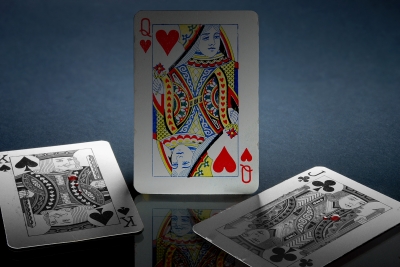
It’s also hard to believe that this 21st century woman— who has grown up into a world of Facebook, who lived in a public fishbowl for nearly a decade while trying to get married to one of the last and richest princes in the world, whose sister’s bare breasts were once photographed by press (amid speculation that they were in fact hers), who invited the entire world into her wedding, who has hired lawyers and security firms to complain about and protect supposed privacy (and who therefore knows perfectly well the lengths the press will go to invade the same), who has complained about press photos of her honeymoon—would somehow not understand that exposing her breasts on an open balcony in a country that has historically been contemptuous of the concept of monarchy might be a really, really bad idea. That is, if she was really serious about her privacy.
I imagine that there has already been a follow-up to her preliminary training: We told you so.
The public relations people, tabloids, and news channels report to us endlessly, if sometimes sarcastically, that Kate is embarrassed. Deeply, deeply embarrassed. But what exactly is the nature of this embarrassment? Who is this blushing new bride whose delicate sensibilities have been hurt by the exposure of her exposed breasts?
How does Kate Middleton, who once strode down a fashion runway wearing nothing more than a lace see-through—very see-through—skirt which she deliberately hitched up to her chest, wearing and showing her black bra and panties underneath, now get to declare that she is now embarrassed? My point here is not that she did anything shameful during the fashion show but that it was clearly a public event. Yes, this was her choice and, yes, she was younger then, but part of what makes this current incident so fascinating is that it represents a turning point in the larger cultural narrative that is slowly—and haphazardly and badly—being constructed, about Kate Middleton as a natural successor to Diana Spencer.
Like A Virgin
In 1982, this image of the woman first known as “Shy Di,” the 19-year-old who supposedly found herself in a whirlwind romance with a Prince, came to light, as did the diaphanous and very see-through skirt she wore while posing awkwardly with two children at the kindergarten where she worked. The fairy-tale romance of Diana and Charles was, as we now know, little more than an epic Royal farce. Charles, 13 years older than Diana, was involved in a decades-long affair with Camilla Parker-Bowles, beginning in the 1970s and continuing even as both married other people and as each had children.
Let me be clear: I’m opposed to the institution of marriage on a number of grounds and I have little patience with the idea of a “normal” family, so I’m not concerned with the morals, or lack thereof, evidenced here. If anything, Royal marital affairs—which seem to vastly outnumber actual matrimonial unions— demonstrate that marriage is never simply a bond between two people but part of the apparatus of the state. It mattered to the Windsors that the line should continue through Charles, not because of any fear of the monarchy dying out and the kingdom falling into disrepair—because, really, you could leave the Queen alone to tend to her Corgis and horses all day long and the country would be just fine—but because the ritualistic formation of the monarchy, the wedding, and the ensuing ritual of nearly public impregnation were crucial to the branding of their name.
The concern with fecundity aligned with a somewhat bizarre obsession with Diana’s virginity. When the engagement was announced, much was made of her pure and virginal character; despite her being a young woman of the 1980s, the claim was made that there were no past boyfriends in the mix. Her uncle went so far as to publicly declare, “Diana, I can assure you, has never had a lover.” Given the creepy Medieval tone of this declaration, we might wonder if a crowd of elders stood around their bed as Charles and Diana went at it on their wedding night, taking notes about the exact moment of consummation.
The wedding itself netted a massive viewing audience, and Diana wore a stupendously silly and Disneyfied Princess dress: Giant fluffy sleeves, a ruffled neckline, and a 25-foot-long train, the longest in Royal history. It didn’t matter that the gown was ugly, because it fulfilled its purpose of setting the fairy tale and the elaborate confabulation of true love on their way; it was exactly what millions of little girls and adult women fantasized about. Over the years, Diana performed her most important duty, giving birth not to one but two sons at a time when only male heirs could succeed to the throne.
As the entire sordid sham of her marriage swiftly unravelled in the public eye, Diana clearly understood how to use the press to her own ends with a deft combination of sex and simpering. In a now-famous 1995 interview with the BBC, she said coyly, with her trademark head-bowed-eyes-upwards look, “I want to be the Queen of People’s Hearts.” The sentence, entirely ludicrous and meaningless but cleverly designed to woo a gullible public, would become inextricably tied to her so-called legacy when she died in the infamous car crash two years later.
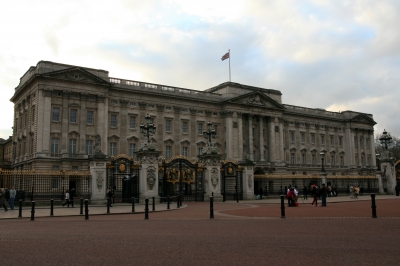
Like a Virgin, Again
Kate Middleton has been consciously following in Diana’s footsteps but some of her path has also been laid down for her. To start with, there is the grisly use of Diana’s famous sapphire and diamond ring as her engagement ring. It’s difficult to say what William was thinking: “With this symbol of my mother’s fraud of a marriage and reminder of her horrible death, I promise to wed thee.” Or, perhaps, we could speculate that psychic death is at the heart of every marriage, and so this gesture should come as no surprise. Whatever the reasons might have been, the conscious handing over of the ring bespeaks a desire to suture Kate to Diana.
While Middleton’s wedding dress was a bit more polished it was, like Diana’s, designed to disappoint fashion critics because of its overly prim and derivative design, clearly based on Grace Kelley’s bridal gown. But, again, the dress fulfilled romantic visions of Princess-ness, and Kate set forth into the fable that lay waiting.
I don’t suggest that there is a man—or perhaps a queen—behind a green curtain somewhere, pulling the strings and dictating that there should be constant parallels drawn between Kate and Diana. There was bound to be a larger cultural desire to see Diana in Kate, and there is also the fact that print and online media, in their desperate bid to gain eyeballs, will spend time coming up with the most strained comparisons. Even in those, however, it’s clear that a public and media interest in the parallels between the two women might also dovetail with a very deliberate attempt on the part of Kate and her publicity machine to capitalise on those comparisons. Take, for example, Middleton’s recent appearance at a mosque where she donned a headscarf and modest clothing, and the immediate media pronouncements that the resemblance between her and Diana at a mosque in Malaysia was chill-inducing. In fact, the women look nothing like each other and there is, after all, a very limited number of ways in which one might wrap a scarf around the head while inside a mosque. Yet, it’s hard not to wonder if the sartorial choice may indeed have been deliberately chosen by Middleton to echo Diana’s: The two outfits, both with almost identical lines of buttons and in the same pale palette, bear a suspiciously strong resemblance to each other.
A popular fashion meme is of how much the two women dress like each other, but the reality is that Royal fashion is dictated by a great many conditions including, yes, modesty and propriety, as well as, for instance, the need to wear outfits that pay homage to the places visited. The media hoopla is predicated upon the idea that there is something pre-destined and eerie about Kate stepping into Diana’s shoes when, in fact, the truth is far more prosaic: Diana and Kate are entirely interchangeable and the similarities between them are not coincidental but deliberate and, on occasion, manufactured.
There are only slight differences between them: Kate has degrees and is a brunette, but she has done nothing with her education and her marriage may well be the highest achievement, such as it is, of her life. Like Diana, she will be compelled into producing an heir or more, a task made much easier by the recent change in laws: For the first time, it has been decreed that first-born female children may ascend to the throne. Kate has surely not had a virginity test, but we can certainly speculate, with some justification, that she may in fact have had a fertility test. At the very least, we can be assured that she will be hounded mercilessly to become pregnant: one news outlet went so far as to photoshop a baby bump onto her stomach. At 29, she’s considered practically over the hill, so there will be enormous pressure on her to become pregnant quickly.
Indeed, given all this positively Medieval obsession with pedigree, fertility, virginity, and the production of heirs, it’s safe to say that there’s little difference between the mating of Royals and the careful and supervised coupling of prize and pure-bred Corgis, the Queen’s preferred pets since she was 18. It’s unlikely, given how high the stakes are, that even a ten-year courtship was not strictly scrutinised with copious amounts of bum-sniffing by all parties involved.
But what, we might ask, is at stake here? Are Kate and William simply not a young couple in love? Is this not the love story of the century, every little commoner (commoner millionaire, that is) girl’s dream of growing up to marry a prince? Is all this just idle speculation about two people in love?
(Not) Working Hard for the Money
Not if you consider what the Windsors are worth to Britain, and how much is really tied up with the Windsor industry (too large to be merely referred to as “cottage”). By one official estimation, the Monarchy (which is to say: a general fascination with Britain’s history of kings and queens) brings in over 500 million pounds. Even this report cannot resist pointing out with some glee that, “[t]he spell cast by the Monarchy’s 1,000 year history combined with the international media frenzy around the current Royal Family is extremely powerful at drawing people to certain iconic locations.” This is, of course, the same media frenzy blamed for Diana’s death and for Kate Middleton’s topless photos. The Windsors even with, and perhaps because of, their family problems, and despite the expense of maintaining them, are a fantastically profitable commodity, and the Brits know it. The Kate-William wedding was estimated to bring in 620 million pounds to the economy. Is it any surprise that the image and propriety—or lack thereof—of a future queen should be so carefully monitored and tweaked when necessary?
When Middleton’s announcement to William was announced, there was some speculation as to whether or not they had signed a prenuptial agreement—surely a commonsensical arrangement given that Diana had received a stupendous amount of 17 million pounds upon her divorce. But royal sources denied there had even been any discussion of one, leading Diana’s former private secretary Patrick Jephson to comment, “If she was my sister, I’d tell her to get a good prenup” and add “Kate’s not just going into a marriage, she’s going into a business.”
Jephson hits the nail on the head, and it’s clear that Diana understood full well the power she exerted as a visible stakeholder in the business. It’s when we come to understand the net worth of that business to a country that is also home to a global finance capital, that we understand why the Royals should have been so particular about Diana’s virginity, so concerned about fertility, so very showy about being irate about Kate’s modesty, and why the two women are so constantly linked together, consciously and unconsciously, in a somewhat morbid style. 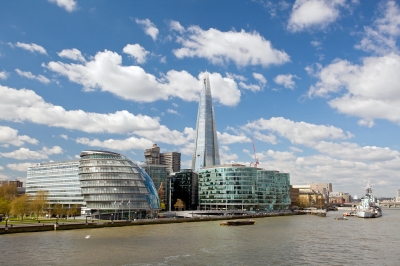
I don’t mean to imply that there is a cabal of men plotting all of this in a secret room in Buckingham Palace (although, given that the Monarchy has been around for a 1000 years and has had a lot of practice with general deceit, cunning, and manipulation, perhaps that’s entirely possible). Rather, I’m suggesting that there is on the one hand an official and very literal investment in who the Queen will be and what she will be like and, on the other, a larger cultural drive towards maintaining the business enterprise that constitutes the Windsors and Brand Britain. That latter drive might manifest itself as intense loyalty towards the Royal Family or, at least, to the idea of retaining the Monarchy, as well as a general sense that their Royals need to behave and not be too odd, too bad, or too sad. When it comes to gender, Britain may have had a Queen for the past 60 years, but she has been in large part responsible for maintaining sexist rules about divorce and succession to the throne (a key reason why Charles could not marry Camilla in earlier years).
We might ask if there could have been similar ire on the part of the Royals if she had been photographed topless or nude amongst a crowd of friends. Probably not, because it’s one thing to claim embarrassment if photographed with one’s husband but quite difficult to explain one’s state of undress in a group. In the midst of all this kerfuffle, it’s easy to forget that the photos were probably not really an issue until the Royals kicked up a fuss. In effect, it’s not improbable and, I would argue, more than possible that this is seen as an opportunity to recreate Kate’s modesty, to stitch her hymen back in place, as it were, while not very subtly (almost boorishly, one might argue), staking out her place in the legend of Diana.
Hymen, you might ask? But surely, you might say, This is ridiculous—no one is asserting that Kate Middleton was a virgin, and she is now a married woman who has been open about having boyfriends in the past. Her actual virginity is besides the point. When they speak of modernising the monarchy, they are merely referring to the technology—the queen now uses email, and the Monarchy has a twitter account. But the fetishisation of virginity and purity and the deep sexism continue. The point here is that the ideas of virginity and purity form an unyielding demand that, let us be frank, is faced by many or most adult women in the supposedly cosmopolitan West. The tale of her ascent to possible Queendom reveals a classic injunction whispered by culture into women’s ears: Do whatever you have to do to get your man and then become purer than the driven snow once you’ve snared him.
Kate Middleton visited the Solomon Islands at the end of her recent trip, and was greeted by several bare-breasted women. Jonathan Jones is right to point out that the pictures of the encounter “open up enough paradoxes of symbolism to keep a conference of cultural anthropologists busy for a month or so.” But there is in fact a far greater irony evident in this visit, and it lies in the way that Kate is projected as the representative of modernity and free will in supposed contrast to the women of the Islands. One of the hosts of the visit spoke of the islands’ “…cultural barriers, [in] a male dominated society [where women] are seen as daughters, mothers wives and sisters, not the decision-makers.” It’s hard to tell if Middleton might have reflected upon her position as the emissary of a Monarchy and a larger culture still so obsessed with purity and procreation, and where female children have only just been allowed to ascend to the throne.
Hers is less a marriage than a wedding frozen in time. Middleton is defined by the world and herself as nothing more than the bride of a prince. In a supposedly revealing interview with The Telegraph, (which was more of a staged public relations spot), Kate and William speak of how they first met and their ensuing romance; she claims that, on meeting him for the first time, she “went bright red and scuttled off, feeling very shy.” The reporter cautiously approaches the issue of their break-up in the past and Kate says, “It made me a stronger person; you find out things about yourself you hadn’t realised…you can get quite consumed by a relationship when you’re younger and I really value that [time], although I didn’t think so at the time.” 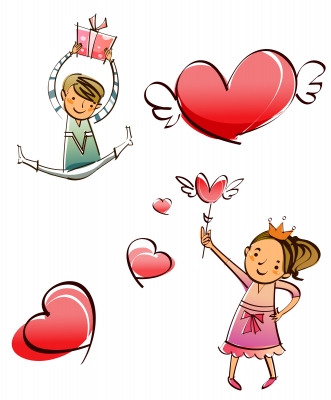
This is the sort of narrative that should drive feminists mad and persuade us to never, ever let children of any gender be exposed to such a deeply retrograde and profoundly troubling narrative of a woman who “found” herself in such a way. What, exactly, did she find, as a woman who has never had a career and whose life appears to have been entirely consumed by her desire to marry a prince? In the future, her “jobs” will be to cut ribbons, have babies, smack her names on charities, and cut still more ribbons. By the time her children grow up—and there will be children, or else— the Royals may well have succeeded in removing the images of her fashion show appearance. She tells the story of her first meeting with William, saying that she blushed and scuttled away. That’s a far more culturally acceptable narrative than the perhaps more truthful one: “I stripped almost naked to attract your father.”
Ironically, it’s the act of dropping her top in France that will allow for the opportunity to re-invent her as a proper Queen-to-be, a deeply embarrassed woman who only meant to show her breasts to her lawfully wedded husband. The public declaration of Diana’s virginity came on the heels of a story that she and Charles had actually spent two nights together on a train to Balmoral. In her case, her virginity needed to be established before the Royal Romance Farce could be launched. In the case of Kate Middleton, what we see is a reinventing of her as not exactly virginal but at least as modest and easily shocked, a reinvention that allows her to take her rightful place in the hymenal economy of Brand Britain.
***
NOTE: Wherever possible, I use first or last names because I despise everything about the monarchy: its empty rituals, its money-grubbing and thieving snobbery, its historical cruelty and exploitation of people and land, and its general tendency to do little more than empty the world of resources that could and should go elsewhere.
I would, however, like the Kohinoor. And perhaps a necklace or two from the Queen’s collection.
Son, You Lie: Harry Windsor Is Exploiting His Mother’s Death
Kate Middleton or, Abolish the Monarchy

Don’t plagiarise any of this, in any way. I have used legal resources to punish and prevent plagiarism, and I am ruthless and persistent. I make a point of citing people and publications all the time: it’s not that hard to mention me in your work, and to refuse to do so and simply assimilate my work is plagiarism. You don’t have to agree with me to cite me properly; be an ethical grownup, and don’t make excuses for your plagiarism. Read and memorise “On Plagiarism.” There’s more forthcoming, as I point out in “The Plagiarism Papers.” If you’d like to support me, please donate and/or subscribe, or get me something from my wish list. Thank you.

First image courtesy Ryan Conrad. All others, http://www.freedigitalphotos.net/
